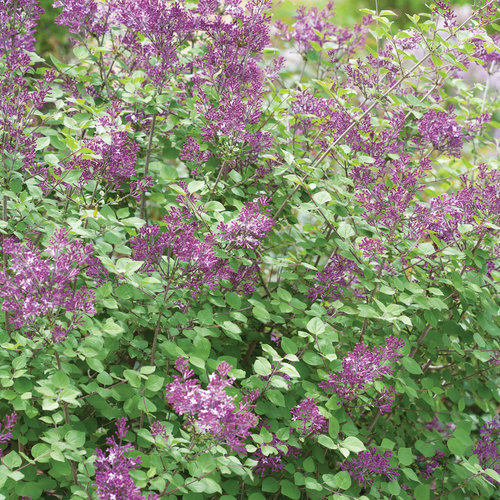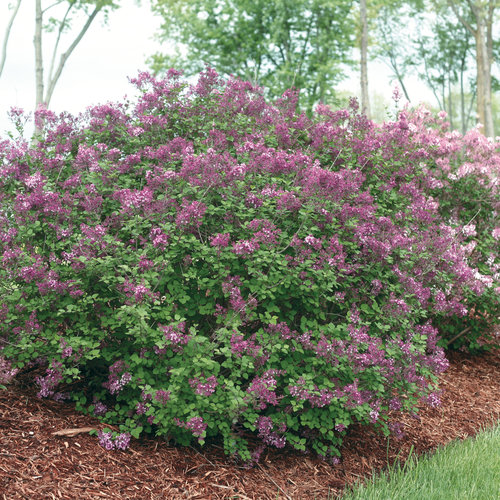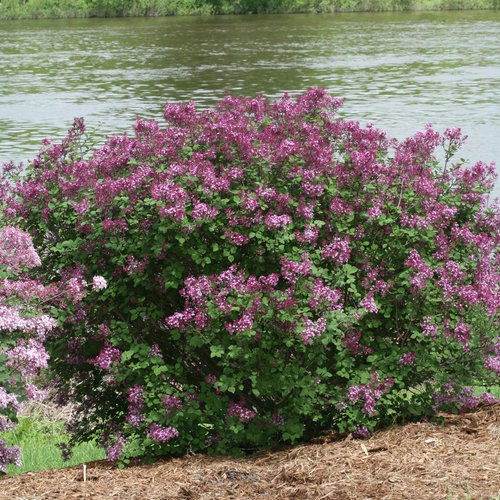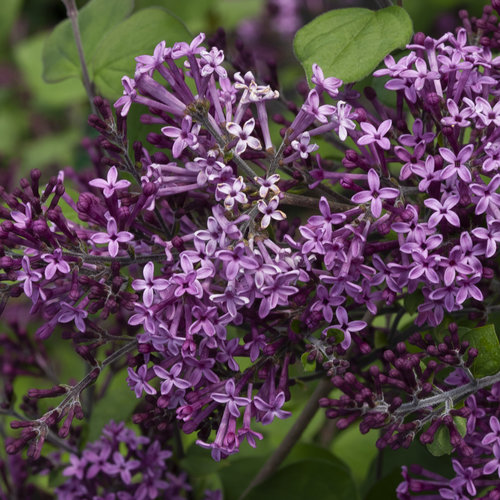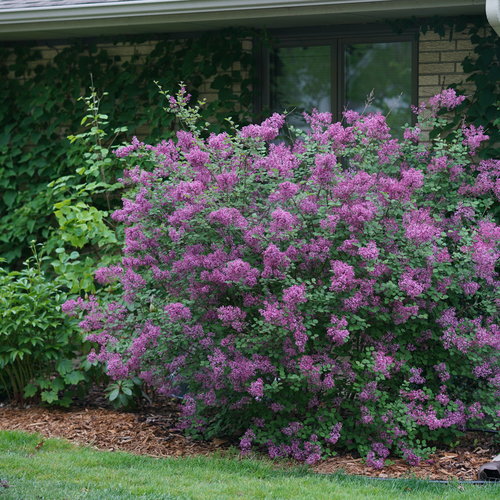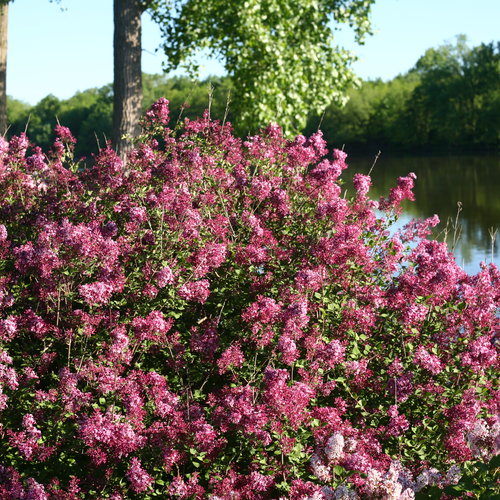Plantinformation
HOME OF PROVEN WINNERS®
Plant Information
Bloomerang® Dark Purple
Syringa
Displays very large dark purple buds emerging in mid to late spring. They open to a classic deep purple-lilac color and perfume the air for weeks. The plant then takes a brief rest to create new growth before it starts to bloom again in mid to late summer, continuing through frost. It is noted for its exceptional disease resistance. The neat, rounded shape looks good in the landscape or garden, attracts butterflies, and resists deer.
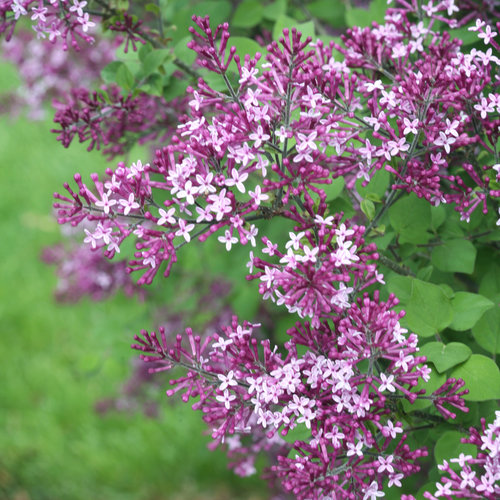
| Blossom Color | Purple |
| Bloom Season | Spring, Summer |
| Exposure | Sun |
| Height | 48-72 in |
| Width | 48-72 in |
| Spacing | 48-72 in |
| Container Sizes | 28, QT |
| Hardiness Zones | 3, 4, 5, 6, 7 |
| Wildlife Attracted | Butterflies |
| Wildlife Deterred | Deer |
| Features | Displays very large dark purple buds emerging in mid to late spring. They open to a classic deep purple-lilac color and perfume the air for weeks. The plant then takes a brief rest to create new growth before it starts to bloom again in mid to late summer, continuing through frost. It is noted for its exceptional disease resistance. The neat, rounded shape looks good in the landscape or garden, attracts butterflies, and resists deer. |
| Adaptable as a Houseplant | No |
| Bog Plant | No |
| Is Disease Resistant | No |
| Drought Tolerant | No |
| Edible | No |
| Erosion Control | No |
| Fragrant Flower | Yes |
| Fragrant Foilage | No |
| Heat Tolerant | No |
| Native to North America | No |
| Salt Tolerant | No |
| Succulent | No |
| Water Plant | No |
| Uses |
A classic addition to foundation plantings and mixed borders. Bloomerang lilac is also a popular choice for planting in decorative containers - learn more here. |
| Maintenance Notes |
Plant only in full sun and well-drained soil; lilacs cannot tolerate soggy, wet conditions. The rebloom of Bloomerang lilac occurs on the new growth the plant creates after its spring bloom. For the best rebloom, it's vital that the plant grows vigorously during late spring and early summer. Do this by keeping it well-watered and mulched and in plenty of sun (six hours a day at least). If you wish to fertilize it, you may do so in early spring, once the ground has thawed, and again in late spring, after it blooms. If you want to prune Bloomerang lilac, do so immediately after its spring bloom. Never cut it back in fall, winter, or early spring - doing so will remove the spring flower buds. It is not necessary to prune Bloomerang lilac in order for it to rebloom. However, giving it a light trim after blooming does remove the developing seed heads (they look like green bananas, and some people don't care for the way they look on the plant), providing a neater look, and encourages more new growth for reblooming. Trimming after blooming will delay the rebloom by a few weeks compared to an untrimmed Bloomerang lilac. Like nearly all lilacs, Bloomerang lilac actually requires a period of cold weather in order to bloom well. This is why lilacs are not typically suited to warmer climates. However, they are very, very cold tolerant and thrive in climates as cold as USDA zone 3. |


